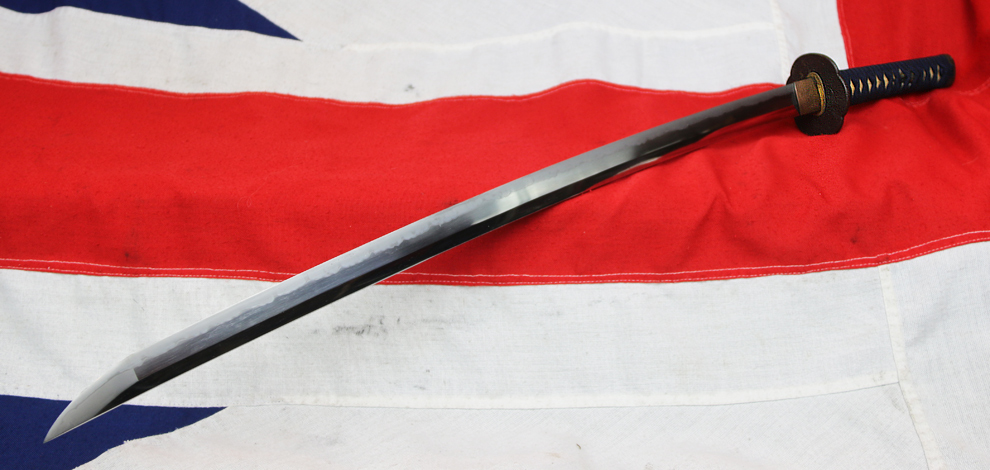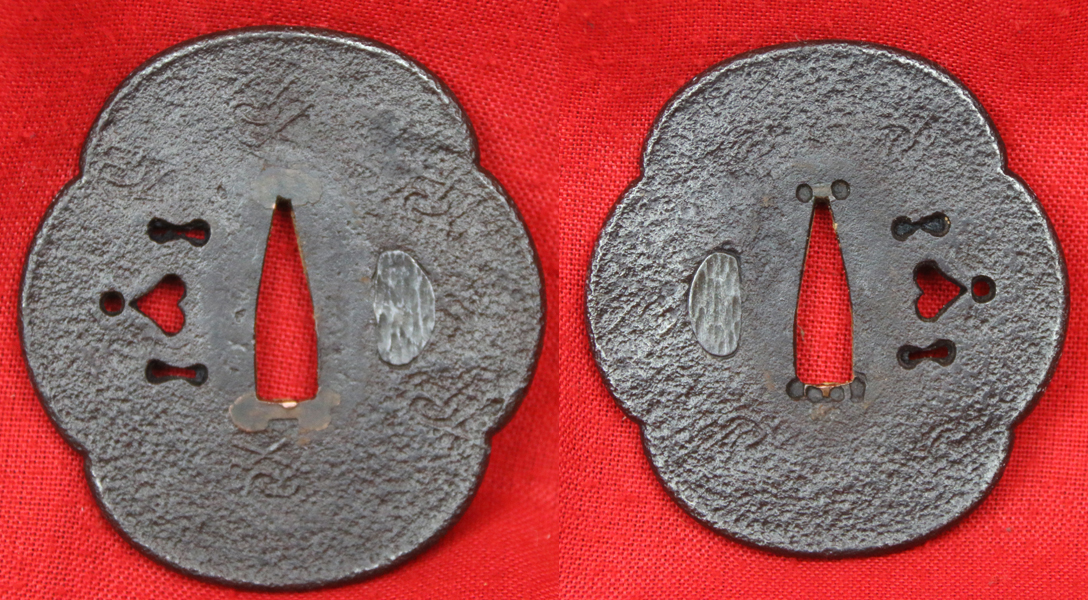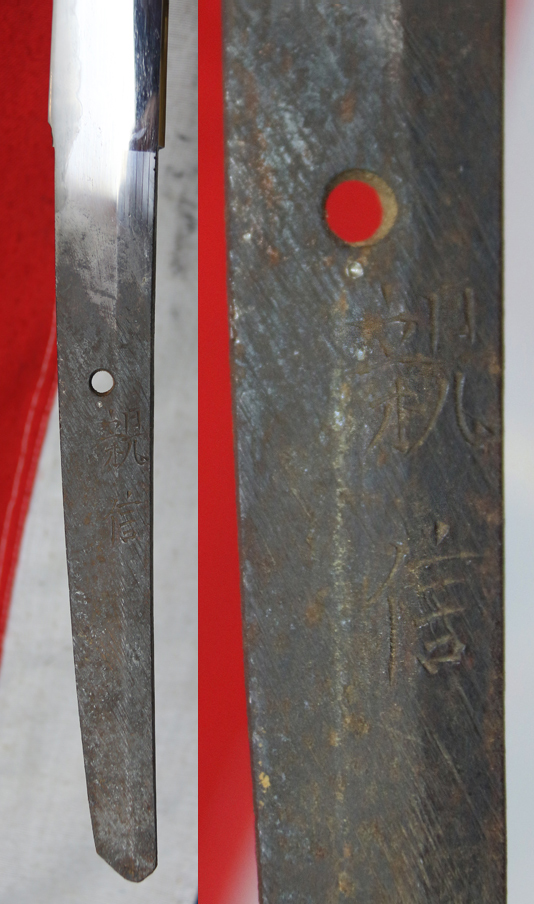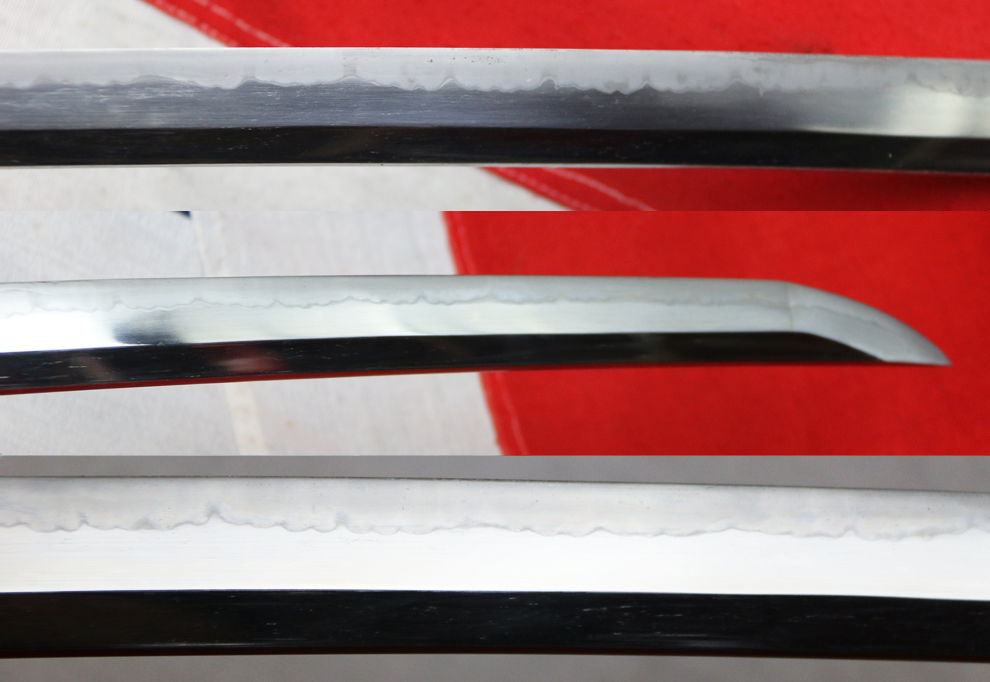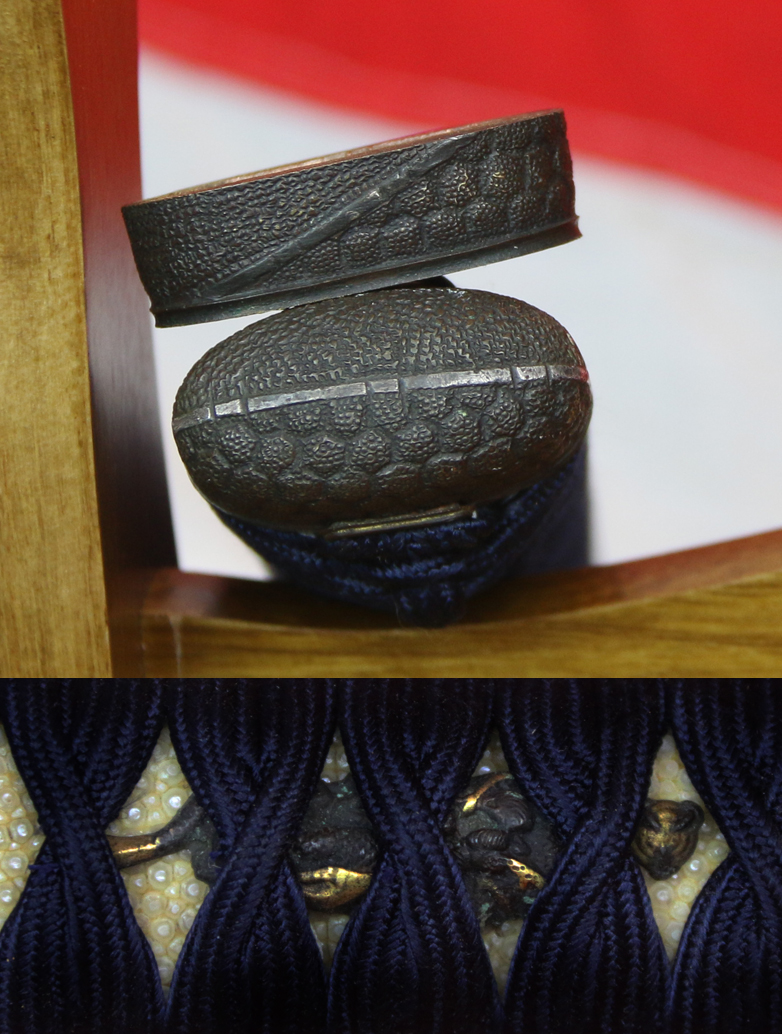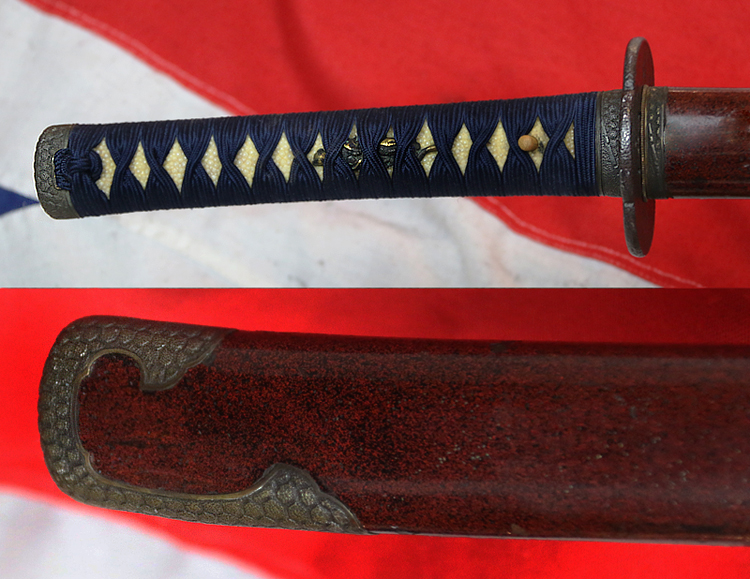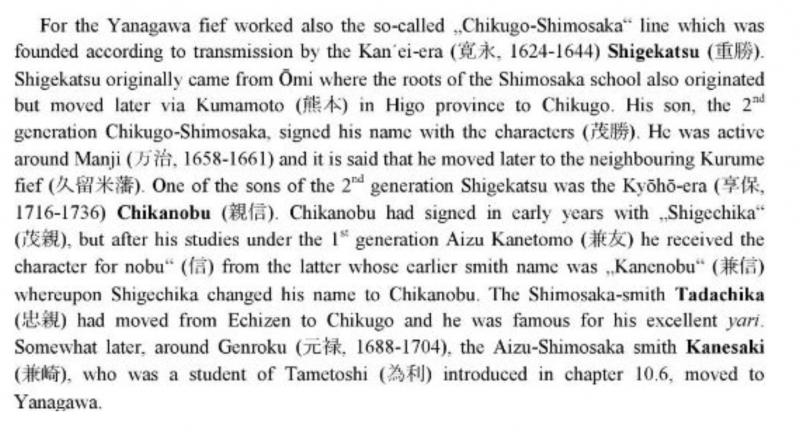A Very Good & Beautiful Shinto Long Katana Signed Chikanobu. Very Good, Unique Matsushiro Sinano Sinchu & Silver Line Koshirae. Gold and Shakudo Dragon Clutching The Pearl Of Wisdom Menuki. Circa 1680.
All original Edo period mounts and lacquer saya. Fine iron tsuba. With a very beautiful choji hamon to the blade is an absolute beauty, and fully polished.
Long kissaki. Dark blue silk tsukaito over traditional giant rayskin with gold and bronze menuki of dragons. Fully matching suite of sinchu and contrasting silver line mounts to the tsuka and saya, of the Matsushiro Sinano school. A well hammered rough surface...smooth rim though, Saotome Tembo tsuba with kakine kokuin stamps, udenuki-ana, lead ume, uchikaeshi mimi rim, boars eye piercing.
The first master of the Saotome school was Nobuyasu of Shimotsuke. Nobuyasu moved to Odawara in Sagami were the Saotome school itself was founded. Some of the early Saotome makers were Nobuyasu, Iyenori, Iyetsugu, Iyetada and Iyesada although there is some disagreement on the lineage of the school. There were many other generations working well into the late Edo period. The Saotome School gave rise to the Tembo School of tsubako.
The Tembo School (also spelled Tempo, Tenpo or Tenbo) also worked well into the Edo Period. They are most noted for the use of kokuin (hot stamps) on their plates,
This unique original mounting is called “Matsushiro” koshirae which was specially made in Matsuro-han in Shinano (Nagano) province in the edo period.
The samurai were roughly the equivalent of feudal knights. Employed by the shogun or daimyo, they were members of hereditary warrior class that followed a strict "code" that defined their clothes, armour and behavior on the battlefield. But unlike most medieval knights, samurai warriors could read and they were well versed in Japanese art, literature and poetry.
Samurai endured for almost 700 years, from 1185 to 1867. Samurai families were considered the elite. They made up only about six percent of the population and included daimyo and the loyal soldiers who fought under them. Samurai means ?one who serves."
Samurai were expected to be both fierce warriors and lovers of art, a dichotomy summed up by the Japanese concepts of to stop the spear exanding into bushido (the way of life of the warrior) and bun (the artistic, intellectual and spiritual side of the samurai}. Originally conceived as away of dignifying raw military power, the two concepts were synthesized in feudal Japan and later became a key feature of Japanese culture and morality.The quintessential samurai was Miyamoto Musashi, a legendary early Edo-period swordsman who reportedly killed 60 men before his 30th birthday and was also a painting master. Members of a hierarchal class or caste, samurai were the sons of samurai and they were taught from an early age to unquestionably obey their mother, father and daimyo. When they grew older they were trained by Zen Buddhist masters in meditation and the Zen concepts of impermanence and harmony with nature. The were also taught about painting, calligraphy, nature poetry, mythological literature, flower arranging, and the tea ceremony.
As part of their military training, samurai were taught to sleep with their right arm underneath them so if they were attacked in the middle of the night and their the left arm was cut off the could still fight with their right arm. Samurai that tossed and turned at night were cured of the habit by having two knives placed on either side of their pillow.
Samurai have been describes as "the most strictly trained human instruments of war to have existed." They were expected to be proficient in the martial arts of aikido and kendo as well as swordsmanship and archery---the traditional methods of samurai warfare---which were viewed not so much as skills but as art forms that flowed from natural forces that harmonized with nature.
An individual didn't become a full-fledged samurai until he wandered around the countryside as begging pilgrim for a couple of years to learn humility. When this was completed they achieved samurai status and receives a salary from his daimyo paid from taxes (usually rice) raised from the local populace. Swords in Japan have long been symbols of power and honour and seen as works of art. Often times swordsmiths were more famous than the people who used them.
likely details on the Chikanori nobu. Slight name change here, he was then actually signing Chikanobu as he did on this blade, appears in kanji reference notes as nori, nobu is next to nori, and thus often confused . He also used to be known as Shigechika
Chikanobu, previously known as Shigechika, studied under 1st generation Aizu Kanetomo, circa 1660.
Chikanobu received the name nobu from Kanetomo as an honour to therefore thus change his name.
Kanetomo also used to be known as another name once, Kanenobu and thus passed the nobu name to Shigechika as an honour, who thus changed his name to Chikanobu
Code: 23063
7950.00 GBP



